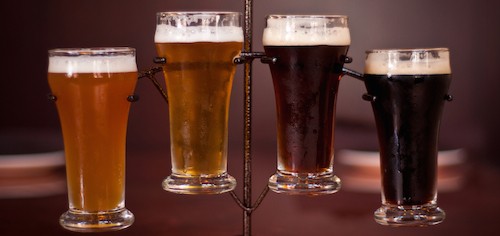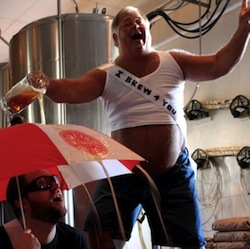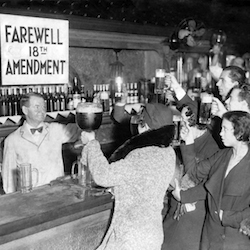Beer Facts
Posted on July 7th, 2020 by Cannata'sFACTS ABOUT BEER: 10 THINGS YOU PROBABLY DIDN’T KNOW ABOUT BEER
Looking to brush up on your beer knowledge? Our 10 Facts About Beer will help you excel at beer trivia or shine among your fellow beer lovers!
Zythology
The “study of beer”. Yes, it’s a thing. A thing with a cool name. From the Greek words zythos (beer) and logos (study), Zythology is more than just chugging pints of lager, it is the analyzing of ingredients and the effect they have on the brewing process, the knowledge of beer styles and history, and the application of beer pairings. A zythologist is a true beer connoisseur.
The Origin of IPAs
India Pale Ales were first developed when English brewers in the early 19th century were looking for a way to export their traditional ales to India. The adventurous journey by sea would take too long, and the beer would spoil by the time it arrived. Extra hops were added, and the IPA was born. Originally, the IPAs were not much stronger in alcohol that other ales, but the hoppy bitterness caught on, and during the mid-1800s, the IPA was being brewed and sold all over England.
The First Professional Brewers
Were all women. In ancient Peru, breweries were operated by ‘women of the elite’. These ladies had to be of noble birth, or extremely beautiful in order to be allowed to brew the beer.
Very similar to current brewing trends…
Booze Hounds
Data from a 2012 Kirin Beer University Report shows that the thirstiest country in the world, per capita, is… Czech Republic. The Czechs consume an average of 148.6 liters per year each, or about 418 12oz bottles per person. Not a bad session.
The country that consumes the greatest volume of beer overall, is China. 44,201 KILOliters per year. That’s 44,201,000 liters, or just under 1.5 BILLION bottles of beer.
Warm(er) Beer is OK!
Those million dollar beer commercials may suggest otherwise, but ice-cold is not the best way to serve beer. While there is no one rule or temperature to aim for, one thing is certain: the sensation of coldness inhibits the tongue’s taste receptors, and so by over-chilling your beer, you are numbing your palate to any nuances of flavors.
Different beers are served at different temperatures around the world. Lagers and Pilsners will taste great around 40 degrees Fahrenheit, whereas some Stouts can be served around 55 degrees Fahrenheit, which is the approximate temperature of a cellar, and so the temperature at which the kegs would be stored. Other British Ales, high-gravity Barley Wines, and Bocks will really open up if served just slightly chilled, somewhat closer to room temperature than many people are accustomed to.
Prohibition in the U.S.
After 13 years, 10 months, 19 days, 17 hours and 32.5 minutes of Prohibition, repeal occurred at 4:31 p.m. on December 5, 1933.
President Franklin D. Roosevelt then declared, “What America needs now is a drink“.
Beer Storage Tips
Follow these beer storage tips to maximize your beer enjoyment;
Store your beers upright.
– This reduces likelihood of contamination from the cap.
Store your beers below room temperature.
– A warm shelf will accelerate the rate at which beer loses freshness.
Store your beers in the dark.
– Beers become ‘sulfurous’ when they are touched by sunlight. This is why some companies choose to use brown bottles – they block the most light and protect the beer as much as possible. This is also why kegs do not have windows.
Speakeasies
The Speakeasy originally got its name because of the “practice of speaking quietly about such a place in public, or when inside it, so as not to alert the police or neighbors.” The name is considered to have originated from the owner of an unlicensed bar in 1880s Pittsburgh.
The Oldest Brewery in the World
While subject to some debate, this is most widely believed to be the brewery of Weihenstephan in Freising, Germany. The Bavarian brewers can trace their licensing history back to 1040 AD, and have been continually brewing ever since. There is also evidence as far back as 768 AD that documents a hop garden located on the land, suggesting many more years of brewing tradition. Rumors of a 5th Century beer-pong table are unsubstantiated.
The Growth of the Craft Beer Industry
The continued growth of craft beer and craft breweries in 2013 means that there are now 2,822 breweries operating in the U.S. (2,768 are considered craft), and the entire craft beer industry employs 110,273 people (including craft breweries and brewpubs).
Cheers!
Craft Beer | July 7th, 2020






